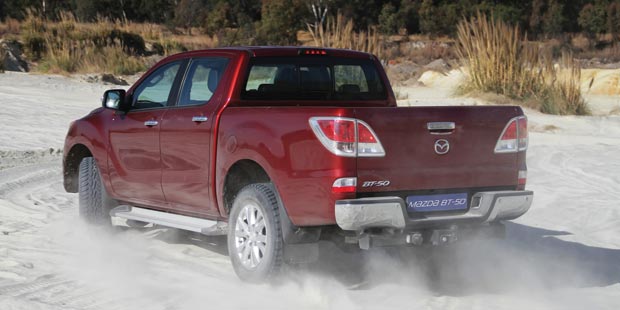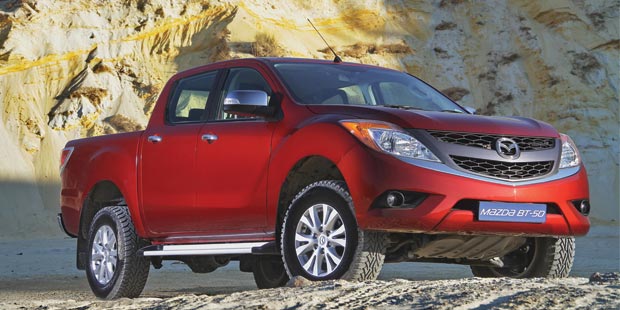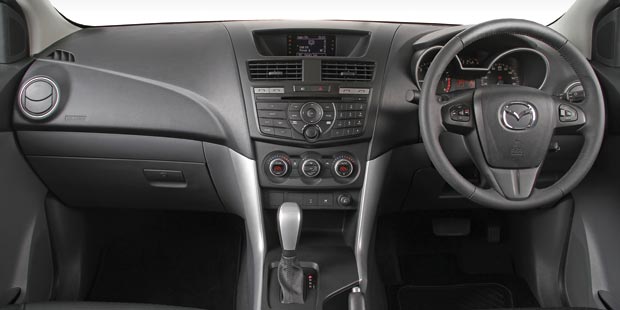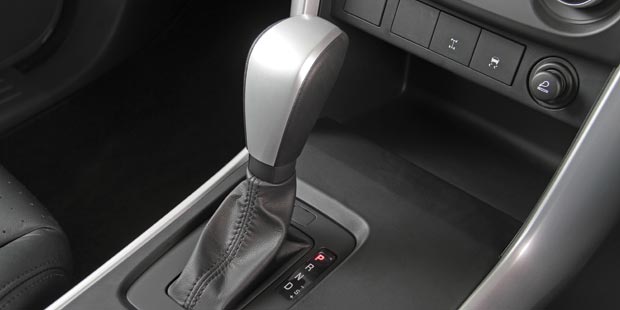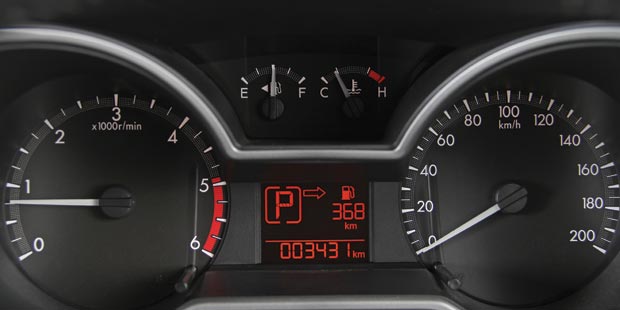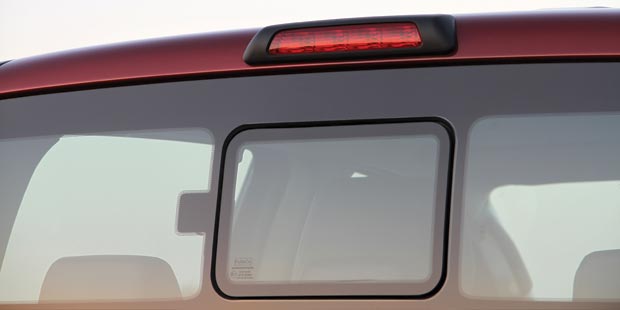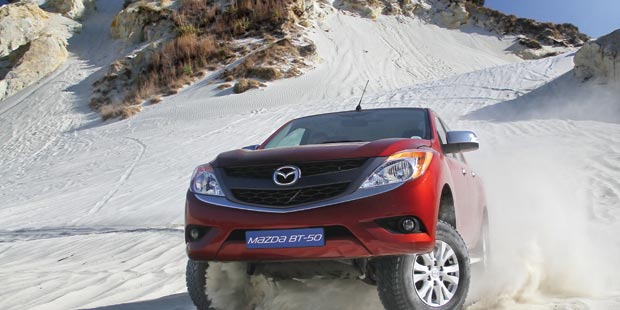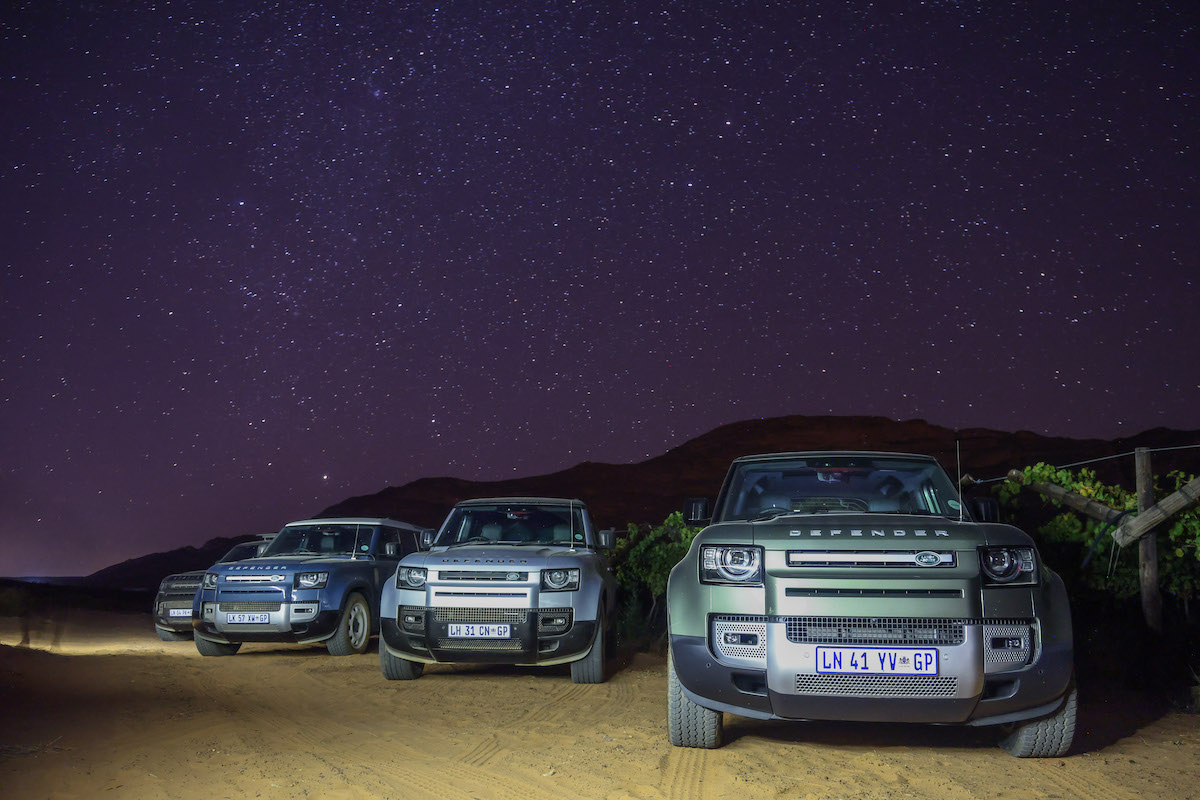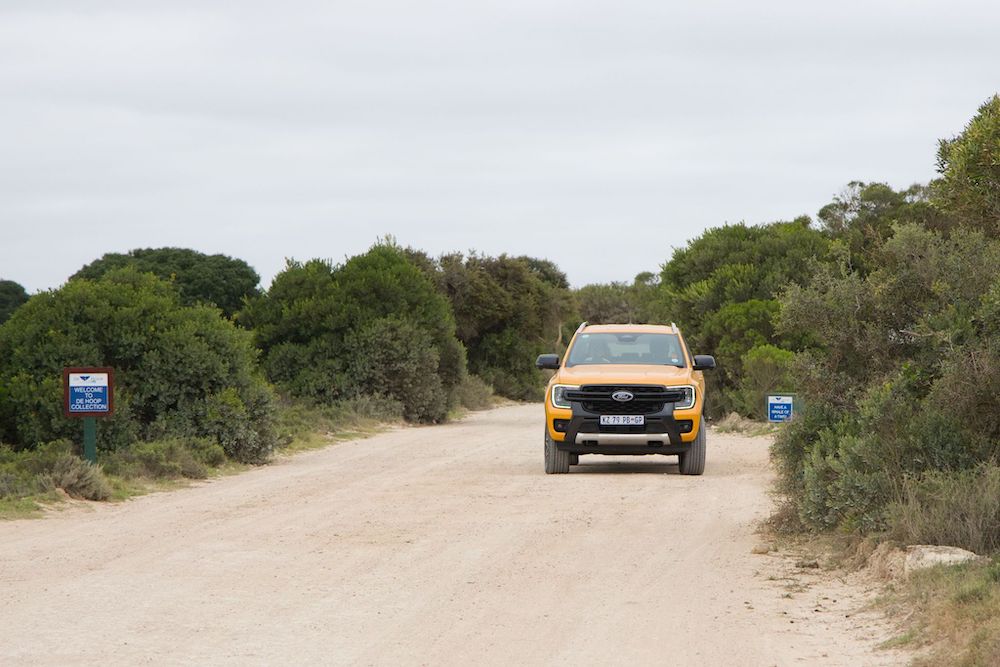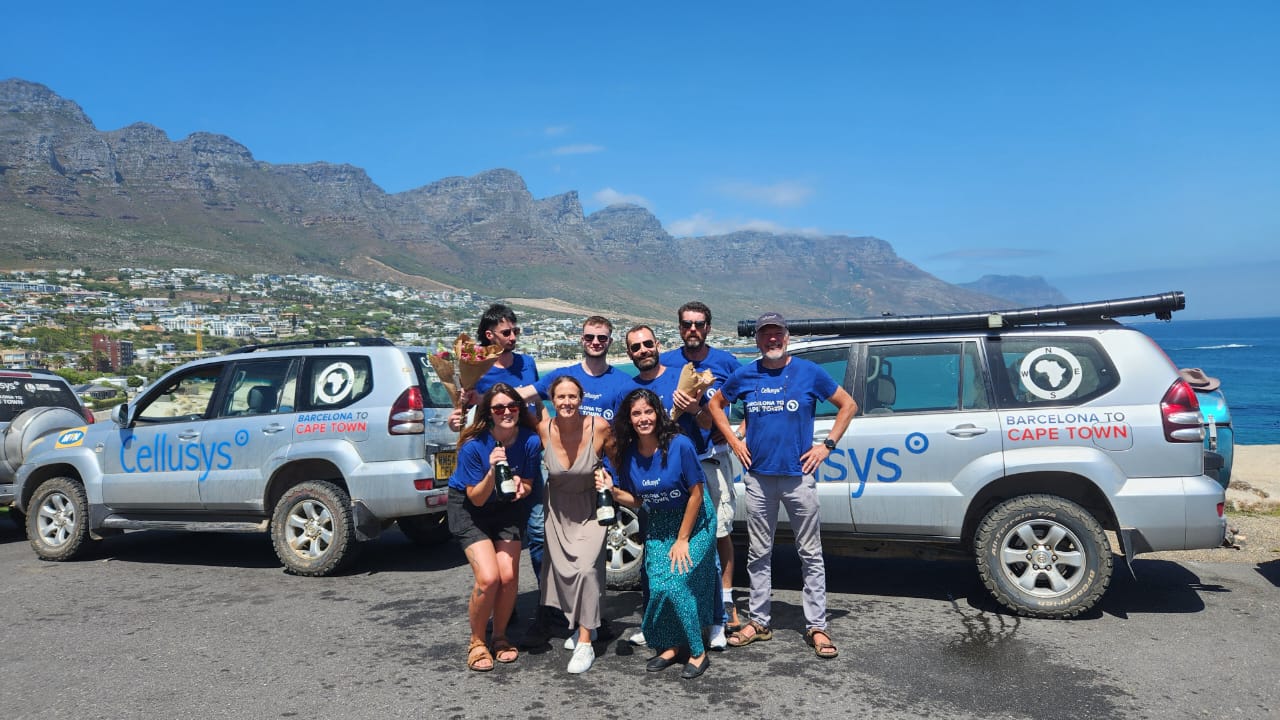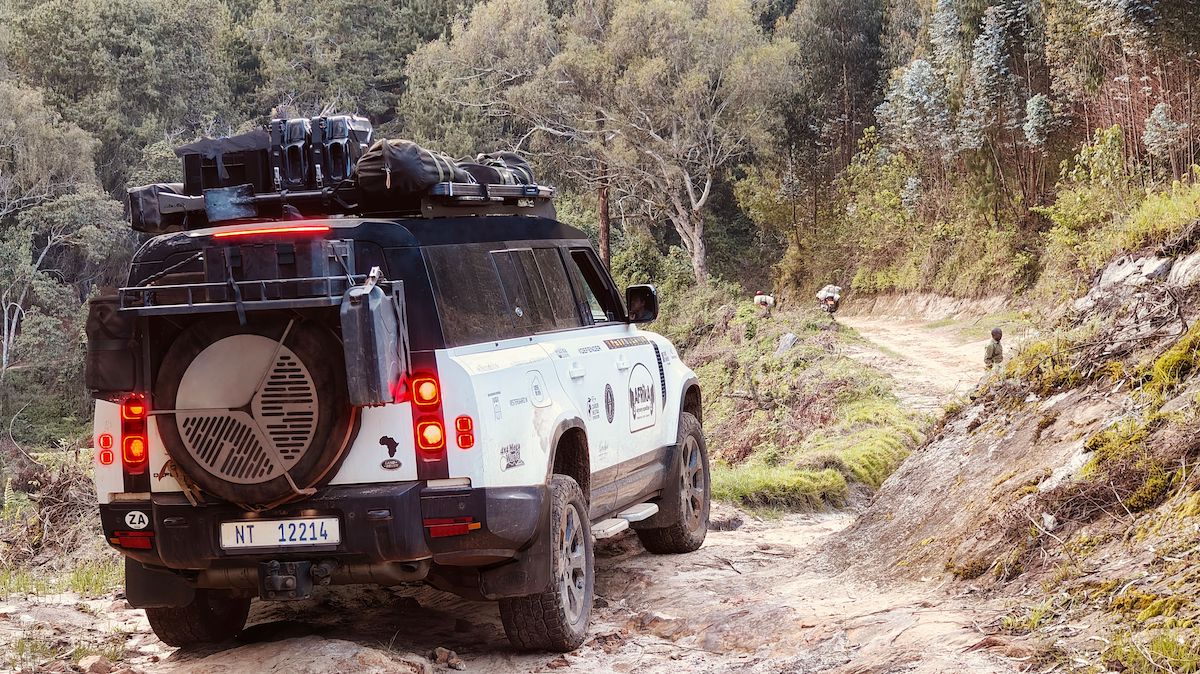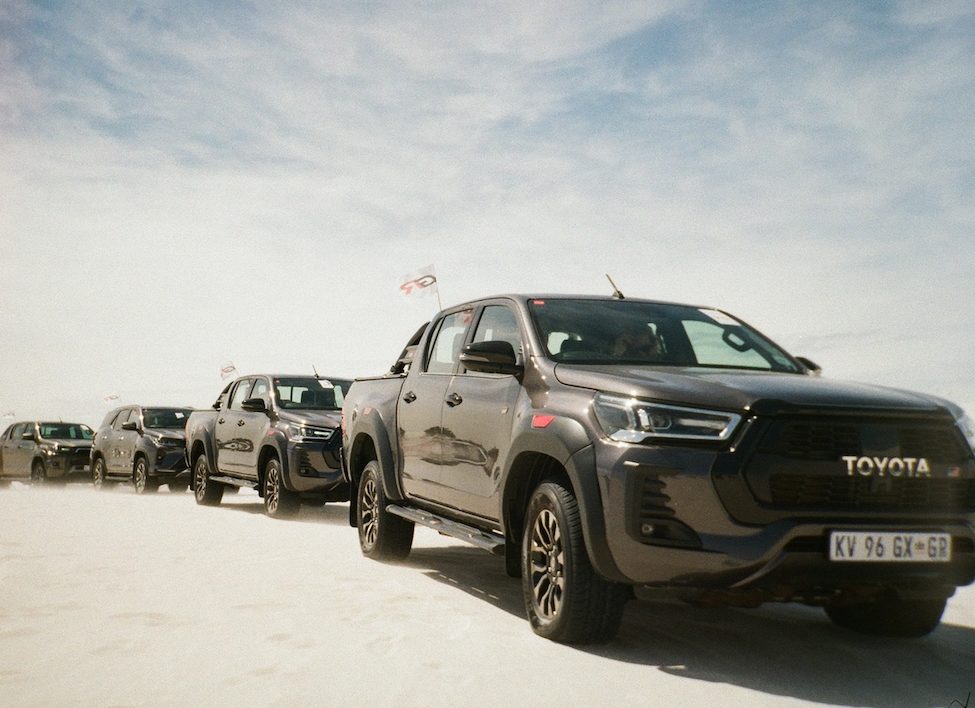As the sun rises over Jozini Dam in Kwa-Zulu Natal, the new Mazda BT-50 test units stand proudly in the parking lot for all to see.
It’s been a bit of a make-over, with the BT-50 losing all its boxy character, exchanged for a streamline and modern – if not futuristic – style. According to the Mazda team, the look was inspired by a feline – in line with the company’s KODO Soul of Motion design philosophy. We saw the “cheetah inspired” looks in the Mazda CX-5 we tested, and the BT-50 is said to be shaped after the lion.
Its starkly different exterior aside, the fleet of BT-50s, now all squeaky clean, made an impressive trip to Jozini. Through river crossings, clay-like mud, thick sand from Lake Sibaya and long, potholed tar roads – they’ve done their best to prove its performance on all surfaces.
Road performance on tar has definitely been a focus in the development process of the BT-50, as the ride is now refined more to the standards of SUVs and its German competitor. The 110kW 4×2 rides smooth, handling is direct on the tar and even more responsive on gravel, and it’s a vehicle you struggle to stick to the speed limit in. The engine, which is a 2,2 litre diesel, is surprisingly refined, and when you do hear it, it’s more a satisfying growl than the bothersome humdrum of a tractor-like oil burner.
So, on tar and loose gravel roads, the BT-50 impressed. Potholes, while not a problem in terms of clearance or deflection on the wheel, are a rather uncomfortable obstacle as the BT-50’s suspension – while everything you’d want in a bakkie – isn’t quite as refined as its road performance has you hoping it will be. Here, the competition is tough, but the BT-50’s suspension is still better than many lesser refined vehicles, and has certainly also moved away from the workhorse “plaasbakkie” feel to, again, a more SUV-like refinement.
Only the 4x4s stand here at the dam, however, with the team opting to leave the 4x2s behind the river crossing. While the vehicles would undoubtedly have made it through if the driver stayed on course, straying from the path waded out by Mazda’s drivers could have made for a submerged vehicle or two. That said, the 4×2 we drove was equipped with a rear differential lock, and the 110kW it generates on power felt far more than it is due to the great power band the vehicle has been given. With that in mind, we were confident our 4×2 BT-50 could have made it through the river crossing without any issues. Alas, they wouldn’t let us risk it.
DETAILS: What’s changed?
The body of the BT-50, in all three guises, is larger than before. Mazda has increased the length, width and height, sticking to the current trend in the bakkie segment. The load capacity is slightly larger (see exact specifications below) and the cabin is roomy.
New seats have been designed for the double cab, single cab and freestyle cab, and the interior is comfort-orientated throughout.
Freestyle cabs, with the exception of the 2,2 litre High Ride 4×2 diesel with manual transmission, all have radios, MP3/CD players and an aux socket. SLE models gain a multi-function display, and SLX models have a two-line display in the centre consol. On a tech-savvy level, then, it strays behind most of its current competition.
The biggest change is that of the engines available, which now include:
2.2 diesel – Common rail, direct injection: available as 88kW with 285Nm (5- speed m/t), or 110kW and 375Nm (6 speed m/t or 6-speed a/t)
3.2 diesel – Common rail, direct injection. 147kW and 470Nm of torque at a low 1750 r/min (6 speed m/t or 6-speed a/t)
2.5 petrol – DOHC engine: 112kW and 225Nm of torque (5-speed m/t)
FEATURES: The finer details
Front suspension consists of a double-wishbone layout with coil springs. Rear features a rigid axle with leaf springs, giving superior ride comfort regardless of load and road conditions.
Features include:
Emergency Brake Assist (EBA): Senses emergency braking and boosts brake power.
Brake Override System (BOS): Automatically overrides the accelerator if brake and accelerator pedals are pressed simultaneously.
Load Adaptive Control (LAC): Senses the weight and position of cargo and controls the operation of 4W-ABS, TCS and DSC to maximize braking, traction and stability, and also reduce the risk of roll-overs.
Trailer Sway Assist (TSA): Senses when a trailer begins to sway and varies the vehicle’s left and right wheel speeds in response.
Roll Stability Control (RSC): Monitors vehicle behaviour and brakes individual wheels as necessary to prevent rollover.
Hill Launch Assist (HLA): Keeps brakes applied for up to two seconds after the brake pedal is released on upward inclines.
Hill Descent Control (4WD only): Applies the brakes to keep the vehicle moving at a predetermined speed.
PRICING: The bottom line
The single cab range starts at R190 330 for the 4×2 petrol, and goes up to R354 200 for the 4×4 diesel. Six derivatives are available.
The freestyle cab begins at R231 950 for a 5-speed manual 4×2 diesel, and tops out with the six-speed manual 4×4 diesel costing R398 970. The line-up consists of five derivatives.
For the double cab range , pricing starts at R340 480 for a six-speed manual 4×2 diesel, and the most expensive in this range is the six-speed auto 4×4 diesel which costs R462 210. Six derivatives are available as freestyle cabs.
Aircon and aircon plus a slip rear axle are available for those derivatives that aren’t equipped with it, at R7250 and R10 870 respectively.
The Mazda BT-50 has service intervals stationed 15 000 km apart, an impressive four-year/120 000 km comprehensive manufacturer warranty, as well as a five-year/90 000 km service plan. A three-year MazdaMotion roadside assistance plan comes standard with the purchase of any Mazda vehicle.
